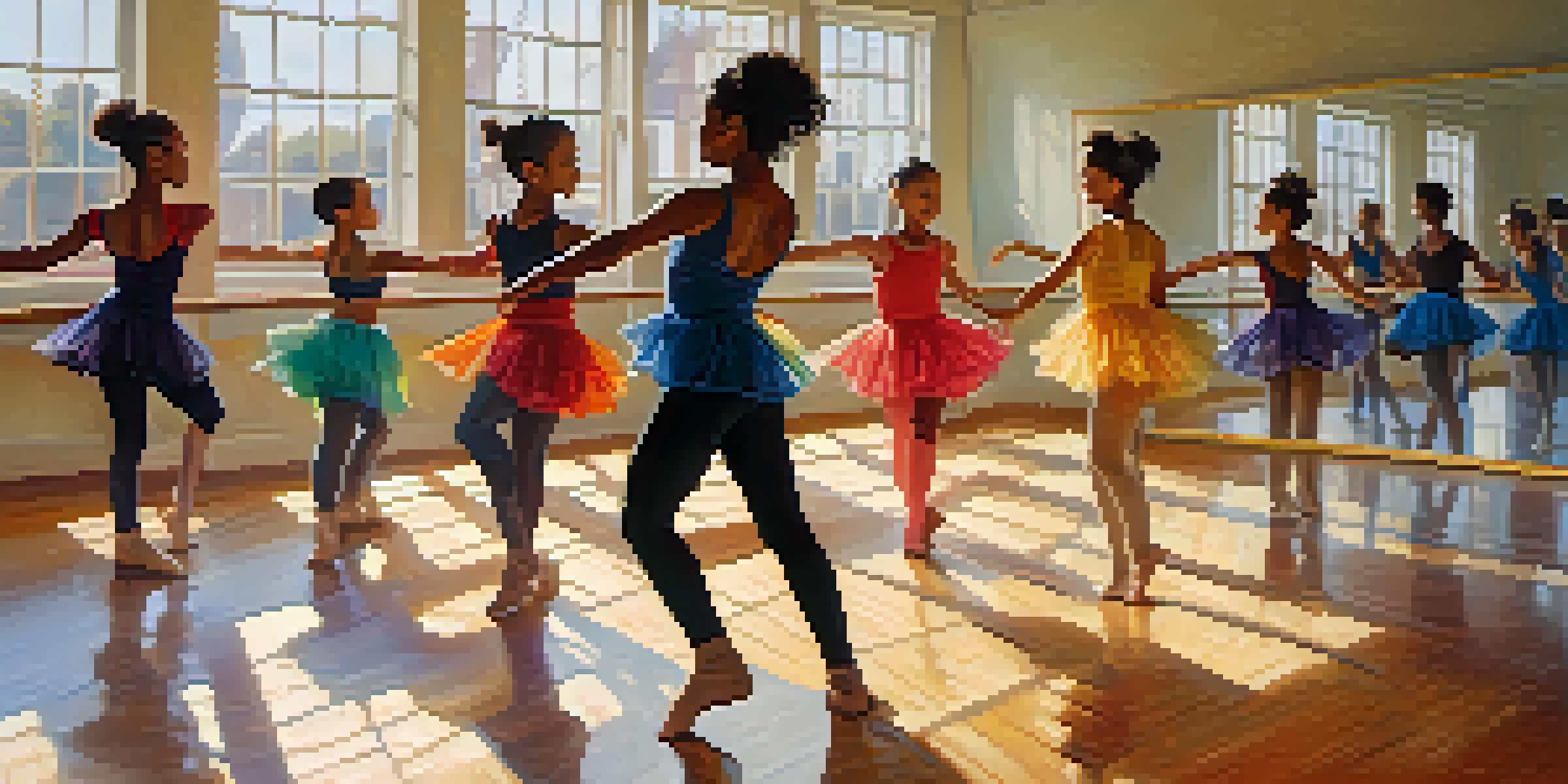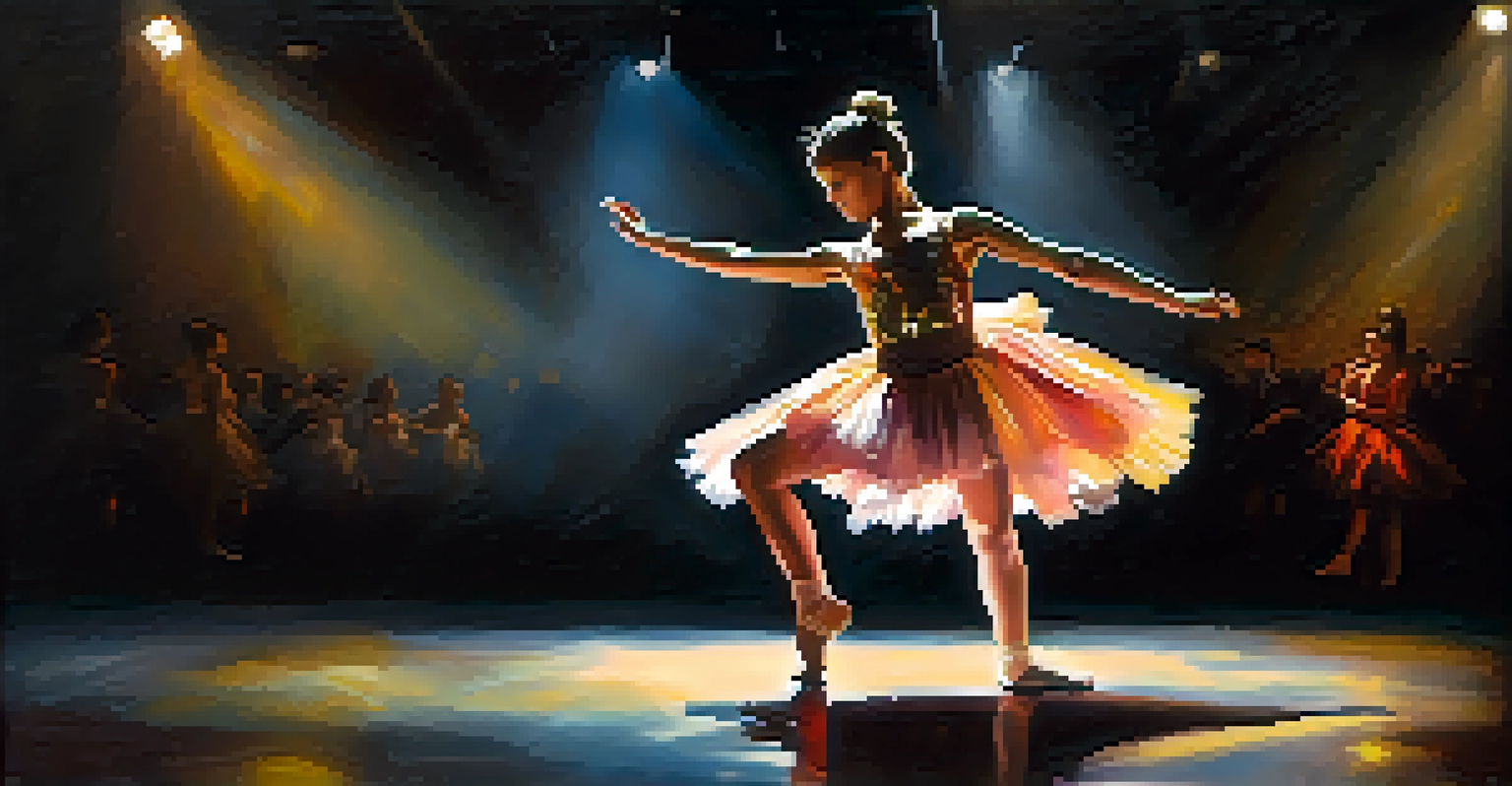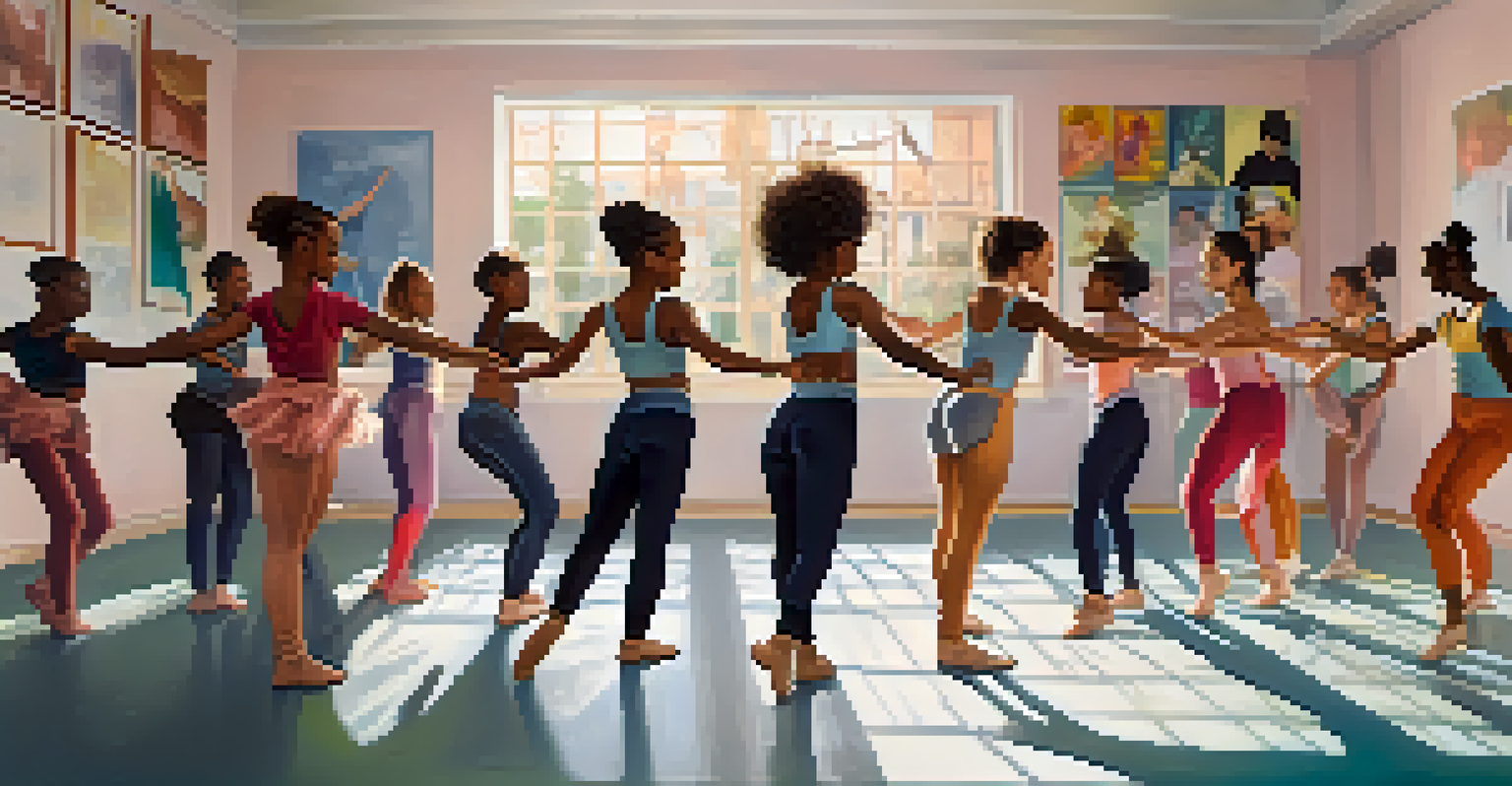Building Emotional Intelligence in Youth Through Dance

Understanding Emotional Intelligence and Its Importance
Emotional intelligence (EQ) refers to the ability to recognize, understand, and manage our emotions and the emotions of others. It's crucial for building healthy relationships and navigating social complexities. For youth, developing EQ can enhance their communication skills and resilience, paving the way for personal and professional success.
Emotional intelligence is the ability to make emotions work for you instead of against you.
Research shows that emotional intelligence is as important, if not more so, than cognitive intelligence (IQ) in achieving success later in life. By fostering EQ in young individuals, we equip them with tools that will help them handle challenges, empathize with peers, and make informed decisions. This is where dance, an expressive art form, comes into play.
Dance serves as a unique vehicle for exploring emotions. Through movement, young dancers can express feelings that words may not fully capture, allowing them to connect with their inner selves and with others. This emotional exploration is foundational for the development of emotional intelligence.
Dance as a Tool for Emotional Expression
Dance is a powerful medium for emotional expression, often transcending language barriers. When youth engage in dance, they learn to convey their feelings through movement, which can be liberating and empowering. This freedom of expression helps them process complex emotions and develop a deeper understanding of themselves.

For example, a young dancer might use choreography to express feelings of joy, sadness, or frustration, translating emotions into a physical form. This process not only fosters self-awareness but also encourages creativity. As they explore various dance styles, they can discover different ways to express their emotional landscape.
Emotional Intelligence Boosts Success
Developing emotional intelligence is crucial for youth as it enhances communication skills and resilience, paving the way for personal and professional success.
Moreover, dance encourages reflection. After a performance or practice, discussing the emotions conveyed during the dance can deepen their understanding of how emotions manifest in their bodies. This reflection is an essential component of building emotional intelligence.
Fostering Empathy Through Collaboration in Dance
Collaboration is at the heart of many dance forms, whether in partner dancing, group choreography, or ensemble performances. Working together to create a dance piece fosters a sense of community and helps young dancers learn to empathize with their peers. This collaborative spirit is a direct pathway to enhancing emotional intelligence.
Dance is the hidden language of the soul.
In a dance class, young people must communicate, listen, and respond to one another, which are all crucial skills for developing empathy. For instance, when creating a group routine, dancers need to consider each other's ideas and feelings, which fosters a supportive environment. This practice teaches them to value different perspectives and emotions.
As they navigate these group dynamics, they also learn conflict resolution skills. If disagreements arise during the collaborative process, dancers must find ways to compromise and understand each other’s viewpoints. These experiences are invaluable for building emotional intelligence that extends beyond the dance studio.
Building Resilience Through Dance Challenges
Dance often presents challenges, whether mastering a difficult routine or performing in front of an audience. These challenges can help youth develop resilience, an essential component of emotional intelligence. Learning to overcome obstacles in dance teaches them that setbacks are part of growth and can be faced with determination.
For example, a dancer who struggles with a complex move learns the importance of persistence and patience. Each failed attempt becomes an opportunity to learn and adapt. This mindset encourages young people to approach challenges in their personal lives with the same resilience they've cultivated on the dance floor.
Dance Enhances Empathy and Teamwork
Engaging in dance fosters collaboration and empathy among young dancers, teaching them to value different perspectives and resolve conflicts.
Additionally, the experience of performing can be a lesson in managing anxiety and fear. By stepping onto the stage, dancers confront their fears and learn to channel that energy into their performance. This ability to manage emotions in high-pressure situations is a valuable skill that translates into other life areas.
Enhancing Social Skills Through Dance Interaction
Dance classes and performances are inherently social, providing young people with opportunities to interact and build relationships. These interactions help develop essential social skills, such as communication, teamwork, and conflict resolution, all of which are intertwined with emotional intelligence. As they engage with peers, they learn the nuances of social dynamics.
For example, during a dance rehearsal, participants must communicate effectively to synchronize movements and create a cohesive performance. This collaboration encourages them to articulate their thoughts and feelings while also being receptive to feedback from others. Such exchanges are foundational for developing strong interpersonal skills.
Moreover, dance fosters a sense of belonging. Being part of a group or team helps youth feel connected and supported, which is vital for emotional well-being. These social bonds reinforce their emotional intelligence by teaching them the importance of community and support networks.
Encouraging Self-Regulation Through Dance Practice
Self-regulation is the ability to manage one's emotions and behaviors in different situations, a key aspect of emotional intelligence. Dance requires discipline and focus, which fosters self-regulation as young dancers learn to control their movements and emotions during practice and performance. This skill can be beneficial in various aspects of life.
For instance, during a dance class, students must stay attentive and follow directions, even when they feel frustrated or tired. This practice helps them develop the ability to manage their impulses and maintain composure. Over time, they learn to channel their energy into productive practice rather than letting negative emotions take over.
Cultural Awareness Through Dance
Learning various dance styles helps youth appreciate diverse cultures, fostering empathy and respect in our global society.
Additionally, the routine and structure of dance classes provide a framework for developing self-discipline. Regular practice and commitment to improvement instill a sense of responsibility and accountability, essential traits for emotional regulation. When young dancers learn to balance their emotions and focus on their goals, they are better equipped to handle life's challenges.
The Role of Dance in Cultivating Cultural Awareness
Dance is a universal language that transcends cultural barriers, offering young people a unique opportunity to explore and appreciate diverse cultures. By learning various dance styles from around the world, youth can develop cultural awareness, an important element of emotional intelligence in our global society. This understanding fosters empathy and respect for others.
For instance, participating in traditional dance forms allows dancers to connect with different cultural histories and practices. This exposure encourages them to reflect on their own cultural identities while fostering a sense of appreciation for the richness of diversity. Such insight is crucial in developing a well-rounded emotional intelligence.

Moreover, this cultural exploration can spark conversations about social issues and challenges faced by different communities. Engaging in these discussions not only broadens their perspectives but also enhances their understanding of emotional experiences across cultures. This comprehensive view is essential for nurturing empathy and emotional awareness.